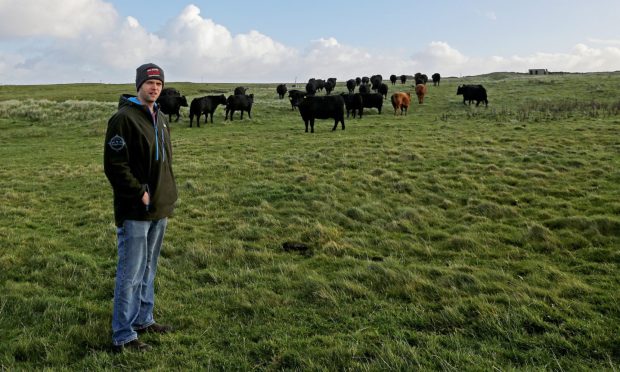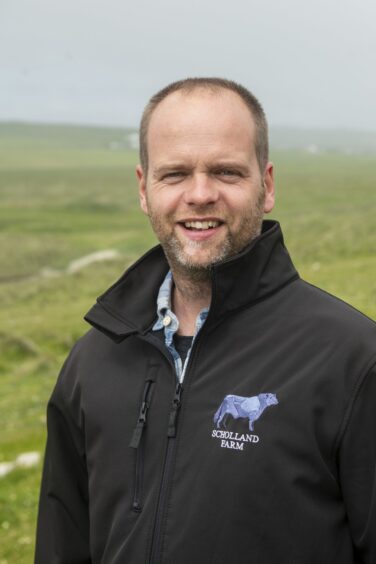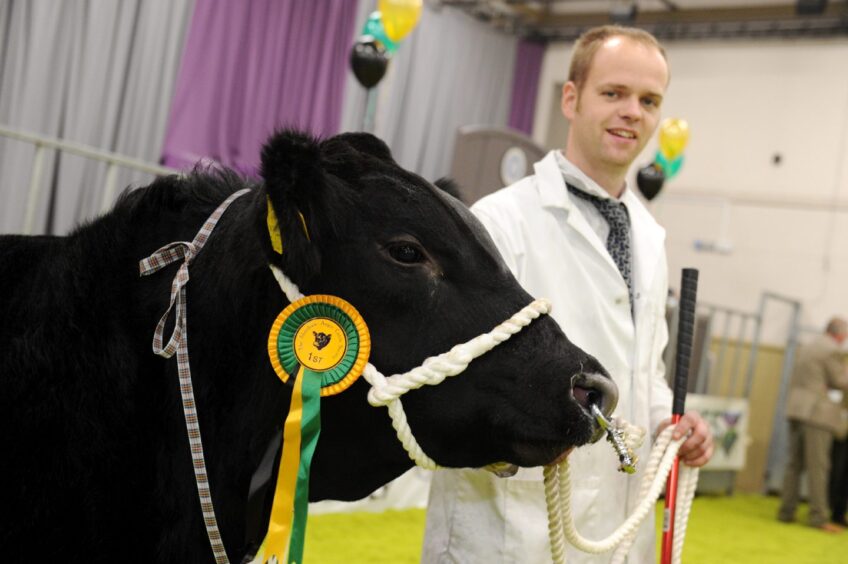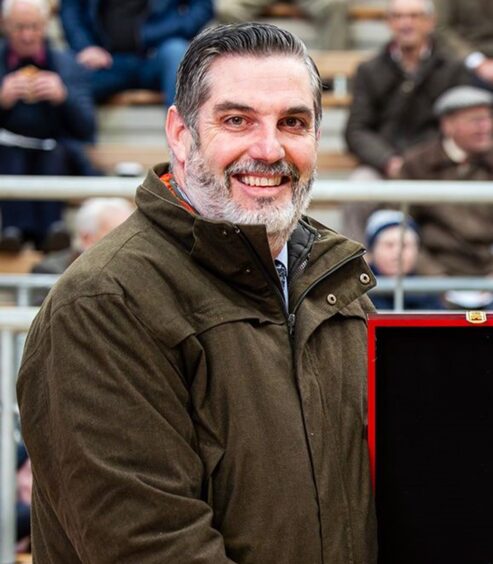Fatter cows are the key to success for one of the most northerly beef herds in the UK, conference delegates heard today.
Shetland beef farmer Jamie Leslie told them he likes animals that “easily put on condition”.
His focus on fat for improved profitability and sustainability came at the British Cattle Breeders Conference in Telford, Shropshire.
Jamie’s ‘fat farm’ for cows
Cows which gain condition while suckling calves are greatly valued on Jamie’s farm.
He runs a 90-cow Aberdeen-Angus suckler herd at Scholland Farm, near Sumburgh Airport.
The farm also has a 900-ewe commercial sheep flock.
A “leader-follower” rotational grazing system is in place, with the cattle used to reset pasture behind ewes and lambs all summer.
Selecting the right traits
Jamie said: “Our cows must be able to thrive by grazing grass for nine months of the year.
“By selecting for cows that easily put on condition in our system, we can then use that energy reserve later in the season – when grass quality is low – to reduce our costs.”
“We want cows who produce a nicely suckled calf, whilst getting nicely fat; this means they winter cheaply.”
Sharing data for last year, Jamie said his cost of production – excluding a rent equivalent cost for owned land – was £1,017 for a 600kg (1,323lb) finished steer.
This is based on a suckler cow cost of £645, a further £279 for taking the weaned calf to turnout and £93 for keeping it from a year-old in March until October.
Our cows must be able to thrive by grazing grass for nine months of the year.”
Jamie Leslie, Shetland farmer
Aberdeen-Angus Cattle Society chief executive Robert Gilchrist told delegates Jamie’s focus on breeding for fat could easily be mirrored by other farmers – and deliver multiple benefits.
Robert explained how the industry’s past move towards breeding leaner cattle led to unintended consequences.
These included higher finishing costs, increased cow costs due to higher feed requirements and reduced fertility.
We are now seeing a return to native breeds as farmers see the benefits of genetics that support higher intramuscular and back fat.” Robert Gilchrist, CEO, Aberdeen-Angus Cattle Society
“Luckily, the perils of over-selection for lean were recognised in the mid-2010s,” the cattle society CEO said.
He added: “Fatter animals were moved to sit on the right-hand side of the Estimated Breeding Values grid (showing genetic potential).
“We are now seeing a return to native breeds as farmers see the benefits of genetics that support higher intramuscular and back fat – namely lower finishing costs, less reliance on concentrate feeds and a lower age at first calving.”
Sustainable models of beef production ‘more important than ever’
Robert continued: “While margins are tight, sustainable models of suckler beef production are more important than ever.
“This can be achieved by choosing the right animal for your system.
“For most beef producers, selecting genetics that naturally offer higher fat, will align with sustainability and profitability goals.”




Conversation